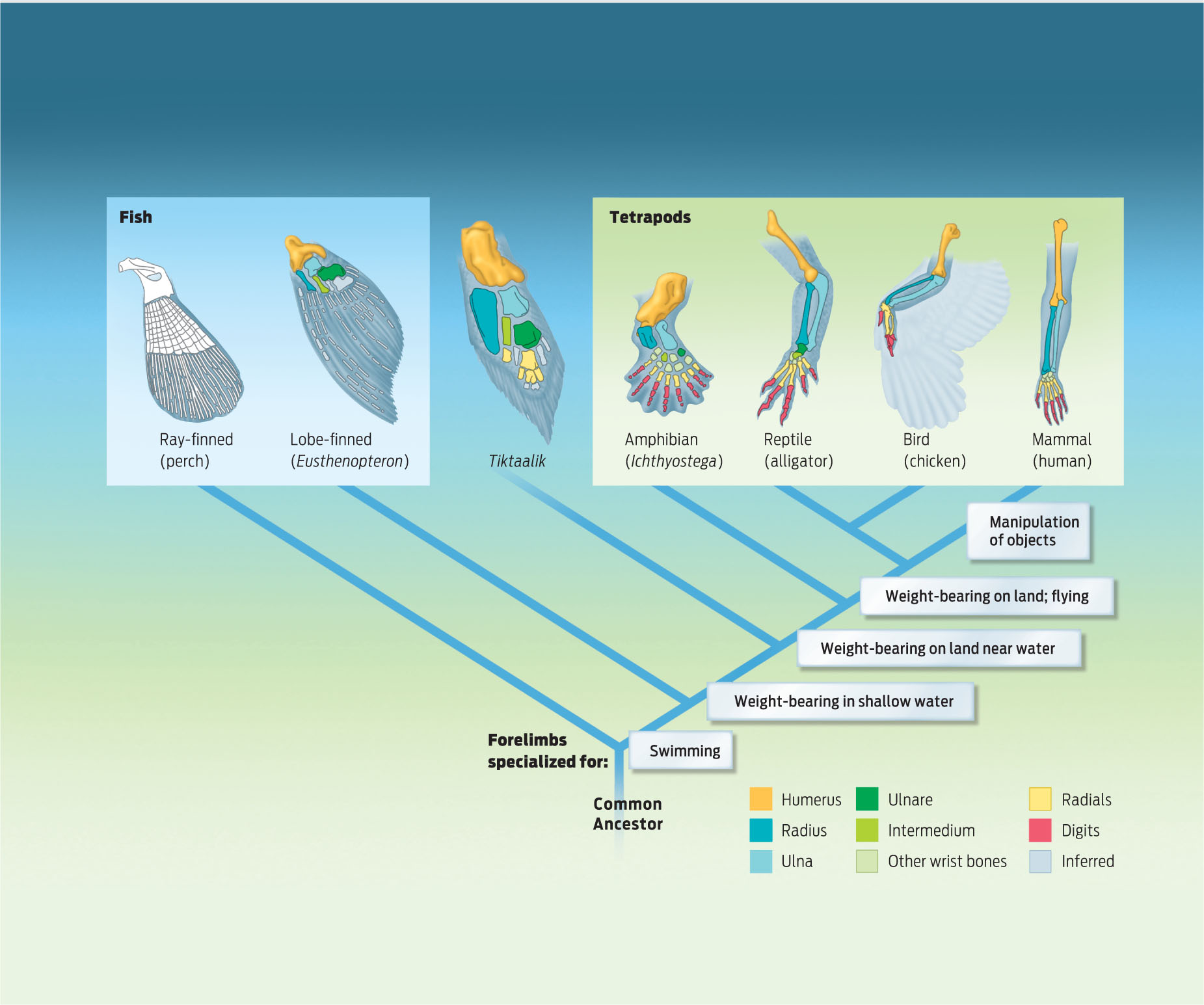
The number, order, and underlying structure of the forelimb bones are similar in all the groups illustrated below. The differences in the relative width, length, and strength of each bone contribute to the specialized function of each forelimb. This anatomical homology is strong evidence that these organisms all have a common ancestor at some time in the distant past. The variations in bone shape and function reflect evolutionary adaptations to different environments.